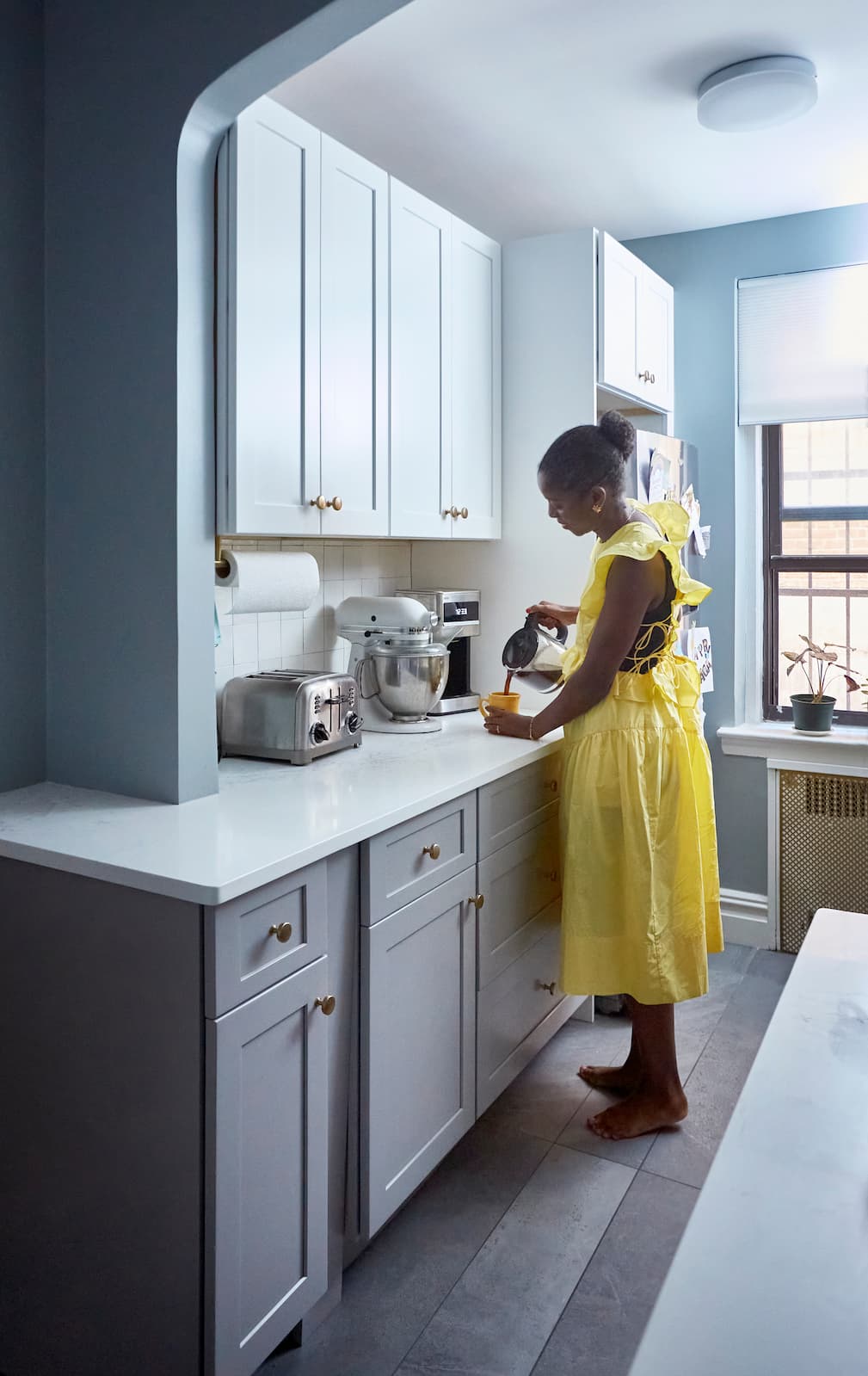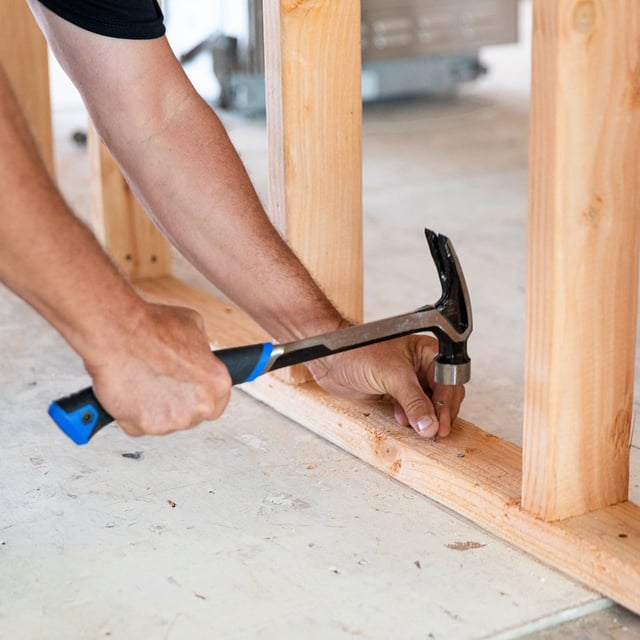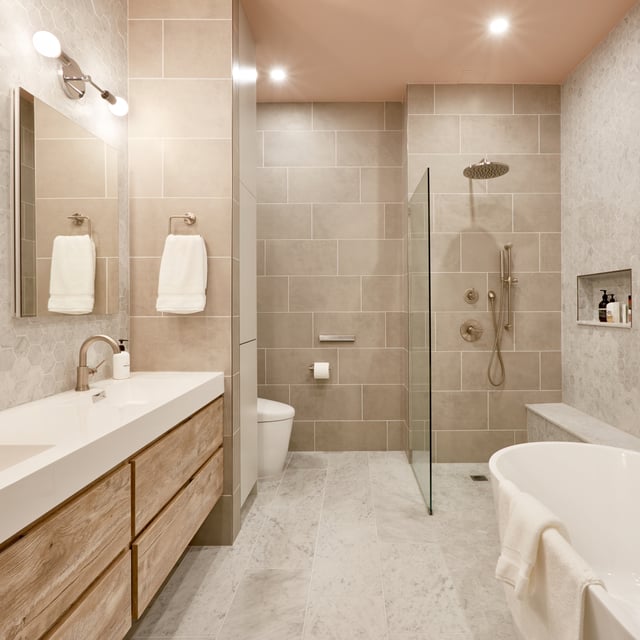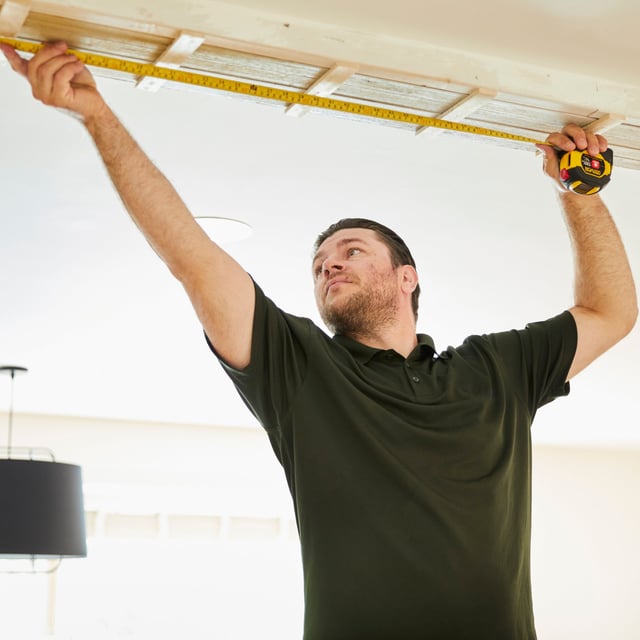
Cost
How Much Does a Bathroom Addition Cost?
09.26.2025


In This Article
Adding a bathroom can make a big difference in how comfortably your home functions—especially if you're sharing tight quarters, hosting more often, or just tired of waiting your turn. But like any major upgrade, it comes with real costs and choices. Understanding what drives those costs can help you plan smarter, stay on budget, and avoid mid-project surprises.
Design a Home That’s Uniquely Yours
Block can help you achieve your renovation goals and bring your dream remodel to life with price assurance and expert support.
Get Started
The way you add a bathroom has a major impact on both cost and how the space fits into your life. Here are the most common approaches, each with its own set of considerations:
A bump-out involves extending your home’s footprint to create space for a new bathroom. This is often the most expensive route, with costs typically starting around $30,000 and climbing to $60,000 or more. You’ll need to pour a new foundation, extend the roofline, and tie into existing utilities. Permitting is more involved, as you’re altering the structure of your home and may need zoning approval.
Pros:
Cons:
Repurposing an underused area—like a walk-in closet or a section of the basement—can be a more budget-friendly approach, usually ranging from $15,000 to $35,000. You’re working within the existing envelope of your home, which simplifies construction and often speeds up the process. Permitting is still required, but the process is typically less complex than a full addition.
Pros:
Cons:
Adding a bathroom to the attic or above the garage can be a creative way to gain space, but it comes with unique challenges. Costs typically range from $25,000 to $50,000, depending on factors like access, insulation, and the need for structural reinforcement.
You’ll need to address sloped ceilings, ensure proper ventilation, and run new plumbing lines—often from lower floors. Permitting for attic bathrooms can be more involved, with extra attention paid to safety, code compliance, and emergency egress.
Pros:
Cons:
This approach to bathroom additions is often part of a larger plan to transform the garage into a master suite, home office, guest quarters, or a flexible living area.
Costs for a garage bathroom conversion typically range from $20,000 to $45,000, depending on the scope of the remodel and the need for new plumbing, insulation, and finishes. Because garages aren’t designed for living, you’ll need to address temperature control, moisture barriers, and may need to raise the floor to accommodate plumbing. Permitting will focus on ensuring the converted space meets residential codes for safety, ventilation, and accessibility.
Pros:
Cons:
Renovate with confidence every step of the way
Step 1: Personalize Your Renovation Plan
Step 2: Receive Quotes from Trusted Contractors
Step 3: Let Us Handle the Project Details

The way you add a bathroom impacts not just the project’s costs, but your lifestyle and the long-term value of your home. Here are key decisions to consider:
Adding a bath near existing plumbing lines—like adjacent to a kitchen or laundry room—can save thousands. Consider traffic flow, privacy, and accessibility for guests or family members. A basement or attic bathroom may offer privacy, but could be less convenient for everyday use.
Think about who will use the new bathroom and how. Is it for guests, a growing family, or aging parents? A half bath near the living room is perfect for visitors, while a full bath with a shower or tub may be better for family use. If accessibility is a concern, plan for wider doorways, curbless showers, and grab bars.
Not all bathroom additions are created equal when it comes to resale value. A well-designed full bath addition can significantly boost your home’s market appeal, especially in homes with fewer existing bathrooms. However, sacrificing a bedroom or major storage space for a bathroom may not always pay off. Consult with a local real estate expert to understand what buyers in your area value most.
Every bathroom addition involves trade-offs, whether it’s about space, budget, or future plans for your home. Before you commit, consider what you’re comfortable giving up—and what you’re willing to invest. Are you prepared to lose a garage bay, closet, or part of a bedroom to gain a new bathroom? Would you rather spend more for a bump-out addition to preserve existing living areas? Sometimes, the best solution means reallocating space or stretching your budget to achieve the functionality you need.
Before you get too far into cost planning, it’s essential to recognize the physical and structural limitations of your home. Not every house can accommodate every type of bathroom addition, and understanding what’s feasible early on can save you time, money, and frustration. Factors like existing plumbing locations, load-bearing walls, ceiling heights, and available square footage all play a role in what’s possible.
Working with an experienced contractor is invaluable at this stage. A knowledgeable professional can assess your home’s layout, identify potential challenges, and help you navigate local building codes and permitting requirements. For example, the minimum recommended dimensions for a half bath (powder room) are typically around 3’x5’ (15-20 square feet) but your contractor can advise if your space can comfortably accommodate fixtures and meet code.
The following table outlines typical costs for a new 50 sq. ft. full bathroom addition—a common size for a comfortable, functional space:
|
Item |
Typical Cost Range |
What This Entails for a Bathroom Addition |
|
Plumbing |
$2,000–$10,000 |
Includes new pipes, drains, and fixtures. Costs rise if lines must be extended far or if you’re adding a shower or tub. |
|
Electrical Work |
$1,000–$4,000 |
Covers wiring, outlets, lighting, and ventilation fans. More fixtures or specialty lighting increase costs. |
|
Permitting & Fees |
$500–$2,500 |
Required by most municipalities; ensures work meets code. Complex additions may require multiple permits. |
|
Framing & Drywall |
$1,500–$5,000 |
Building new walls, ceilings, and prepping for finishes. Structural changes or bump-outs increase costs. |
|
Flooring |
$1,000–$4,000 |
Tile, vinyl, or other water-resistant materials. Larger or more intricate patterns cost more. |
|
Fixtures & Fittings |
$2,000–$8,000 |
Sinks, toilets, tubs, showers, faucets, and hardware. Luxury or custom items increase the range. |
|
Waterproofing |
$500–$2,000 |
Essential for long-term durability, especially in showers and wet areas. Skipping this can lead to costly repairs. |
|
Labor |
$5,000–$20,000 |
Skilled trades for all phases of construction. Complex projects or high-end finishes require more time and expertise. |
|
Painting & Finishes |
$500–$2,000 |
Final touches to complete the space. Specialty finishes or wall treatments add to the cost. |
Know the Cost Before You Start

Adding a bathroom means more water usage, more hot water demand, and increased electricity for lighting, fans, and heated floors. On average, a new full bathroom can add $20–$50 per month to your utility bills, depending on your fixtures and usage habits. If you install electric radiant floor heating or a large soaking tub, expect your energy costs to rise even more, especially in colder climates where heating the space is essential for comfort.
A bathroom addition almost always increases your home’s assessed value, which can lead to higher property taxes. The average property tax increase varies by location, but homeowners often see their annual bill rise by $200–$1,000 or more after a significant addition. It’s wise to check with your local assessor’s office before starting your project so you can budget for this ongoing expense.
Opening up walls, floors, or ceilings during a bathroom addition can reveal hidden issues—like outdated wiring, corroded pipes, or structural damage—that must be addressed before work can continue. These surprises can add anywhere from a few hundred to several thousand dollars to your project. Building a contingency fund of at least 10–15% of your total budget is a smart way to prepare for the unexpected and keep your project on track.
A new bathroom increases the value of your home, which means you may need to update your homeowner’s insurance policy. This can result in a higher premium, typically adding $50–$200 per year, depending on the size and value of the addition. Failing to update your policy could leave you underinsured in the event of a claim, so it’s important to notify your insurer once the work is complete.
A bathroom addition is a major investment, but with the right planning and expert support, it can transform the way you live in your home. Block connects you with experienced, vetted contractors and provides clear guidance at every step—from budgeting and permitting to design and construction. Our platform helps you compare quotes, understand your options, and make confident decisions, so your new bathroom addition is everything you need it to be.

Written by Block Renovation

Renovate confidently with Block
Easily compare quotes from top quality contractors, and get peace of mind with warranty & price protections.
Thousands of homeowners have renovated with Block

4.5 Stars (100+)

4.7 Stars (100+)

4.5 Stars (75+)

Cost
How Much Does a Bathroom Addition Cost?
09.26.2025

Cost
Calculating the Cost of Your 12x24 Addition
09.18.2025

Cost
10x10 Bathroom Remodeling Costs
09.18.2025

Cost
The Average Cost of a Jacuzzi Bath Remodel—and How to Save
09.18.2025

Cost
Ceiling Installation Costs: Repairs & Replacement Pricing
09.05.2025
Renovate confidently